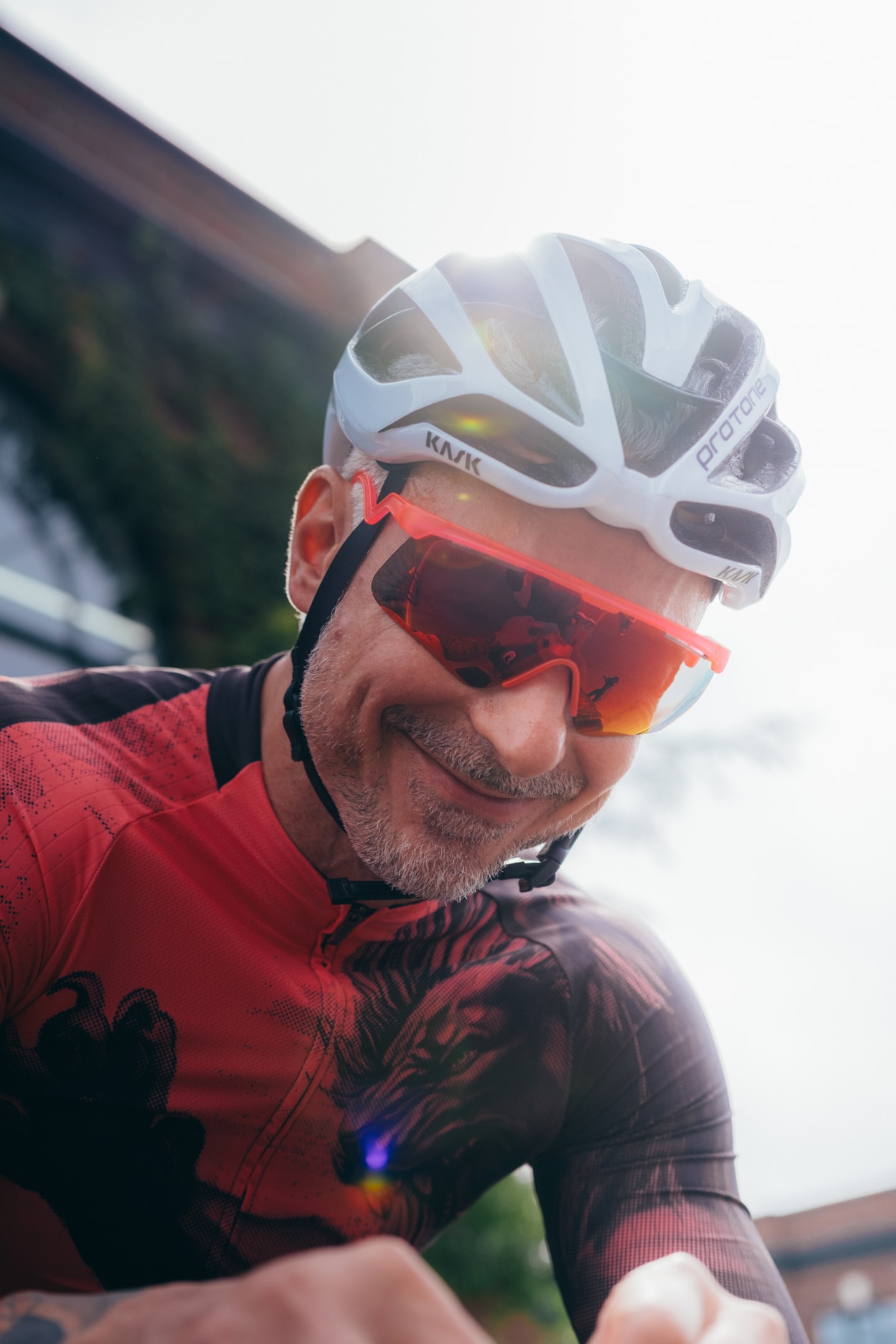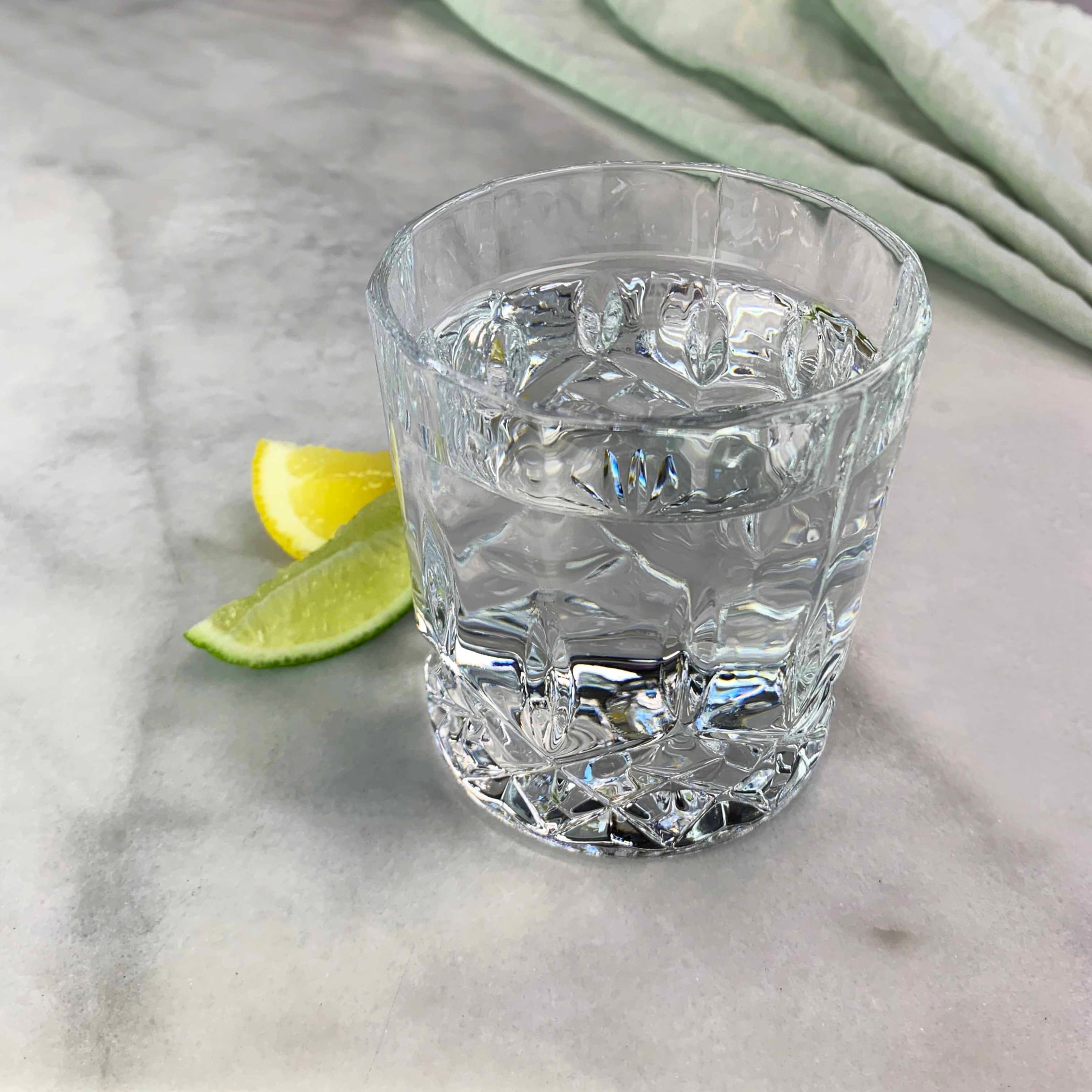Hydration for High-Intensity Training
Optimizing Hydration and Performance for High-Intensity Athletes
Hydration and performance for high intensity athletes are closely linked. Even a small drop in hydration levels can lead to fatigue and poor focus. In this article, we explore how hydration impacts high-intensity performance and share strategies to stay properly hydrated before, during, and after workouts.
Key Takeaways
- Hydration is critical for athletic performance, with even slight dehydration leading to reduced focus and increased fatigue.
- Personalized hydration plans are essential, as fluid requirements vary based on sweat rate, exercise intensity, and duration.
- Electrolytes play a vital role in hydration; athletes should replenish them during and after workouts to prevent muscle cramps and maintain performance.
Optimizing Hydration and Performance for High-Intensity Athletes
Hydration significantly influences athletic performance. Insufficient fluid intake can lead to headaches, cramps, and serious heat-related illnesses, significantly hindering an athlete’s ability to perform at their best. Even slight dehydration can negatively impact performance, leading to diminished focus and quicker fatigue. Proper hydration during training helps maintain body temperature and joint function, essential for peak performance.
Endurance activities can result in significant fluid loss, reaching up to 3 quarts per hour. Performance can be affected by as little as a 1% loss in body weight, with critical levels around 10%. High fluid loss requires proactive hydration strategies to ensure both performance and safety. Waiting for thirst signals is too late; it indicates that dehydration has already started. Maintaining proper daily fluid intake is essential for optimal performance, but how much fluid is necessary to achieve this?
Exercise fluid requirements depend on sweat rate, intensity, and duration. Personalized hydration plans are crucial for addressing individual needs. These plans consider sport-specific factors, ensuring the body receives necessary fluids during competition.
Water, coconut water, and sports drinks each offer unique benefits for hydration. It’s essential to drink water to stay properly hydrated.
Introduction
Athletes in high-intensity sports must stay hydrated to perform optimally. Severe dehydration can be life-threatening, highlighting the importance of a solid hydration strategy. Young children and older adults are especially at risk and require careful hydration management.
This blog post will explore how to maintain optimal hydration levels for peak body function, vigorous training, and efficient recovery.
The Importance of Hydration in High-Intensity Sports
Hydration significantly impacts athletic performance. Inadequate fluid intake can cause headaches, cramps, and heat-related illnesses, hampering peak performance. Even slight dehydration can reduce focus and increase fatigue, making proper hydration essential. In our training, adequate hydration helped us endure longer and perform better, especially in high-intensity activities.
Endurance athletes can lose up to 3 quarts of fluid per hour. Such fluid loss demands proactive hydration to avoid performance decline and health risks. Water, coconut water, and sports drinks are essential for replenishing fluids and maintaining balance.
Athletes shouldn’t wait for thirst to drink; it signals that dehydration has started.
Understanding Electrolytes and Their Role
Electrolytes, which carry an electrical charge when dissolved in water, are vital for fluid balance and can lead to electrolyte imbalance in the body, affecting fluid and electrolyte balance.
Key electrolytes include:
- Calcium
- Sodium
- Potassium
- Chloride
These electrolytes aid muscle control, fluid balance, and nerve signaling. They are crucial for muscle function and performance during intense exertion. Maintaining normal electrolyte levels is essential to prevent muscle cramps and sustain endurance.
Dietary intake primarily provides electrolytes, which are lost through sweat and urine. Replenishing electrolytes during and after workouts is crucial. Maintaining electrolyte balance prevents imbalances that could cause confusion, muscle weakness, and arrhythmias.
Did you know?
Water accounts for about 50-60% of total body mass, and 75-80% of muscle mass? For every gram of glycogen stored, you also store 3 grams of water.
Water is an essential non-nutritive nutrient that we must consume to survive. We can live without food much longer than without water. Water serves as a medium where chemical reactions take place, transports nutrients and wastes, provides lubrication and protection, regulates body temperature, and helps maintain acid-base balance in the body.
The three main electrolytes are sodium, potassium and chloride. (Magnesium, calcium, and phosphate are three other electrolytes). Electrolytes are important for nerve transmission, muscle contraction, and fluid balance.
The current recommendation for water intake is around 3.7 liters a day for men and 2.7 liters a day for women. Another way to put this is around 2/3 of your pounds of body weight, in fluid ounces. For example, if you weigh 150 lbs, you would want to consume 100 ounces of water. For reference, 1 cup is 8 ounces, therefore you would want to consume around 12-13 cups of water.
Did you know that milk is around 90% water, apples are about 85% water and roast beef is around 50% water? It is best to get most water from fluids, however, 20% water intake can come from foods.
- 1 cup of Watermelon = 150 ml of water
- 1 cup of Broccoli = 150 ml water
- 1 cup of Cooked Brown Rice = 150 ml of water
- 1 cup Yogurt = 200 ml of water
- 1 cup of 1% Milk = 200 ml of water
It is best to break up your water throughout the day versus consuming in gulps. I like to recommend consuming about 1 cup of water every hour. During the hour, take little sips on the cup of water. Once done, get up and refill it. This also gets you up and moving 🙂
As mentioned, electrolytes are very important for metabolic processes in the body. Unfortunately, the modern diet is high in sodium chloride (salt) and low in potassium. About 77% of salt consumed is from that added to food during processing and manufacturing, with about 12% coming from salt found naturally in food, and 11 % from salt added in cooking or at the table.
The recommended intake for adults is 1500 mg sodium per day, and 2300 mg chloride per day. For potassium, the recommendation is 3400 mg per day for men, and 2600 mg per day for women. In other words, it is recommended to have 3.8 grams of salt per day.
How to read a nutrition label when it comes to sodium content:
| Sodium free | Contains less than 5 mg of sodium PER SERVING |
| Low sodium | Contains 140 mg or less of sodium per serving |
| Reduced or lower in sodium | Contains at least 25% less sodium per serving than a reference food |
| No salt added | No salt was added during processing |
| Lightly salted | Contain at least 50% less added sodium per serving than that which is added to a reference food |
Foods high in potassium:
- 1 medium Banana = 400 mg
- 1 cup Broccoli = 400 mg
- 1 medium Sweet Potato = 700 mg
- 1 cup low fat plain Yogurt = 550 mg
- 3 oz of Halibut = 500 mg
- 1 medium Orange =250 mg
- 1 large raw Carrot = 250 mg
- 1/2 cup cooked Lentils = 350 mg
- 3 oz Beef = 350 m
EXERCISE
24-hour Movement Guidelines
Not only does Canada have food and exercise guidelines; it also has 24-hour movement guidelines.
Within our 24-hour day, we should be active, reduce sedentary time, and get enough sleep. According to the Canadian Society of Exercise Physiology, following the 24-hour movement guidelines is associated with a lower risk of mortality, cardiovascular disease, hypertension, type 2 diabetes, several cancers, anxiety, depression, dementia, weight gain and adverse blood lipid profiles. Furthermore, it also can bring improvement in bone health, cognition, and quality of life and physical function.
So, what does that look like?
According the Canada’s Physical Activity Guidelines, we should partake in moderate to vigorous activity for 150 minutes a week, in bouts of 10 minutes or more. This can be running, speed walking on an incline, swimming, dancing, partaking in racket sports, and many others. The purpose is to elevate your heart rate.
We should also partake in resistance training each main muscle group, at least twice a week. This can be with your own body weight, with dumbbells or barbells, or with machines etc. The point is to produce tension on the muscle, and create some metabolic stress and muscle damage to promote muscular growth or the maintenance of muscle mass.
In addition to aerobic and anaerobic training, we should move for several hours, which includes walking, standing, cleaning, vacuuming, running errands etc. It is recommended to accumulate over 8000 steps per day. For reference, a ten-minute walk will produce around 1000 steps.
We should aim to limit sedentary time to 8 hours or less. And we should aim to break up long periods of sitting as often as possible. A general rule I like to provide my clients is for every 90 minutes of sitting, get up and move for ten minutes. It is important to take a break not only for physical health, for mental focus as well.
CSEP also recommends that we should have no more than 3 hours of recreation screen time per day. This is going to be twofold: helping with movement during the day and helping with sleep throughout the night.
Lastly, the recommendation with regards to sleep is to get 7 to 9 hours of good quality sleep on a regular basis, with a consistent bedtime and wake-up time (within 30 minutes would be a good target). I like to recommend that you turn off electronics around 1-2 hours before bed, aiming for before 10 pm and slowly start getting ready for bed. Create a bedtime routine and get in the habit of being consistent. Additionally, in the morning it is recommend to get some sunlight exposure.
- Reference: https://csepguidelines.ca/
DID YOU KNOW?
One liter of sweat loss is equivalent to around 1 KG. A loss of 2% body weight is considered dehydrated.
Recognizing Dehydration Symptoms
Thirst, reduced urine output, and darker urine are common dehydration symptoms. Dark yellow or amber urine clearly indicates dehydration. Relying on thirst alone to gauge hydration isn’t accurate; 50.5% of athletes incorrectly believe it’s the best indicator.
Recognizing excessive sweating, thirst, and muscle cramping as dehydration signs is crucial, as noted by 86.5% of collegiate throwers. Hydration is vital to prevent these symptoms and ensure peak performance.
Pre-Workout Hydration
Consuming 16 to 24 ounces of fluid, including water and electrolytes, two hours before exercise is advisable. Drinking 17 to 20 ounces of water a few hours before exercise prepares the body. Starting workouts well-hydrated improved our performance and reduced cramp risk.
Effective pre-workout hydration involves drinking an additional 8 to 16 ounces 15 minutes prior. Drinking 8 ounces of water 20 to 30 minutes before exercise is advisable. This routine helps maintain fluid balance and prepares the body for intense exercise.
During Workout Hydration
Electrolyte levels drop significantly through sweating, so replenishing them during sports is crucial. Heavy sweaters may need extra sodium in their fluids to compensate for losses. In our intense training sessions, we included sports drinks with necessary electrolytes and carbohydrates.
During exercise, drinking 16 to 32 ounces of water per 30 to 60 minutes based on sweat loss is recommended. Athletes should drink 4 to 8 ounces of fluid every 15 to 20 minutes. Avoid drinking excessive water rapidly, as it can cause hyponatremia, affecting sodium balance.
Post-Workout Hydration
Replenish fluids after exercise by drinking 24 ounces of water for every pound lost. Being well-hydrated before exercise and replacing fluid losses during and after workouts is crucial for recovery. Our post-workout hydration routine sped up recovery and improved preparation for future sessions.
Rehydration should ideally occur within 60 minutes post-workout to restore electrolyte balance. Immediate fluid replacement aids quicker recovery and maintains optimal hydration status.
Choosing the Right Hydration Beverages
Electrolyte imbalances can cause serious health issues like confusion, muscle weakness, and arrhythmias. Sports drinks, containing essential electrolytes, are beneficial during workouts lasting over 45 minutes. High-intensity athletes must stay hydrated to maintain performance and prevent health issues.
Knowing the benefits of different hydration options helps athletes optimize their strategy. Sports drinks provide necessary electrolytes, but water is often sufficient for shorter activities. Choosing the right beverage depends on the workout’s duration and intensity.
Water vs. Sports Drinks
Sports drinks help with hydration during workouts over an hour, while water may suffice for shorter activities. These drinks contain water, flavors, colors, electrolytes (mainly salt), and sugar to replenish fluids and provide energy. We found sports drinks with 6% to 8% carbohydrates and 200 milligrams of salt per 16-ounce serving effective during prolonged exercise.
To rehydrate effectively after exercise, drink 3 cups of water for every pound lost. This restores fluid balance and maintains optimal hydration status.
Alternatives: Coconut Water and Herbal Teas
Coconut water, rich in electrolytes, especially potassium, is excellent for rehydration after intense activity. Herbal teas like chamomile and peppermint aid hydration and offer health benefits like improved digestion and relaxation.
Coconut water and herbal teas offer unique benefits but should complement traditional sports drinks and water for rapid electrolyte replenishment.
Incorporating these alternatives into recovery can enhance hydration and offer additional health benefits.
Managing Fluid Loss in Different Conditions
Hot and humid environments elevate dehydration risk, necessitating significant fluid intake adjustments. Sweat rate varies with environmental conditions, averaging 1210 ml per hour in hot weather and lower in humid conditions. During our outdoor training sessions, we had to adapt our hydration strategies to cope with the different climates.
Weighing oneself before and after exercise can help determine the amount of fluid lost and needed for rehydration. Heat acclimatization can enhance sweating capacity significantly, allowing trained individuals to sweat up to 3 liters per hour. Understanding these factors helps in managing fluid loss effectively and maintaining optimal hydration status.
Common Hydration Myths Debunked
Caffeinated beverages can lead to increased urination, but moderate consumption (up to 400 milligrams daily) is generally safe and does not significantly dehydrate the body. Many athletes believe that only plain water is necessary for optimal hydration, ignoring other options.
Hydrating fluids can include sports drinks and other fluids, which provide electrolytes and can enhance hydration during and after intense exercise. Understanding hydration involves debunking myths and recognizing the importance of both water and other beverages for maintaining fluid balance.
Personalized Hydration Plans
Hydration strategies must consider an athlete’s unique physiological traits, including body weight and sweat rate. Individual hydration needs vary based on factors like body size, activity level, and environmental conditions.
Custom hydration strategies can effectively match individual fluid and sodium loss during exercise, helping maintain optimal hydration levels. Monitoring body mass changes before and after exercise is a practical method to assess hydration status. It’s essential for athletes to develop personalized hydration strategies tailored to their specific requirements.
Summary
Hydration is a critical component of athletic performance, particularly in high-intensity sports. By understanding the importance of fluid and electrolyte balance, recognizing dehydration symptoms, and implementing effective hydration strategies, athletes can significantly enhance their performance and overall health. Remember, staying hydrated is not just about drinking water—it’s about making informed choices that suit your individual needs and conditions.
Frequently Asked Questions
How much water should I drink before a workout?
You should drink 16 to 24 ounces of water about two hours before your workout, followed by an additional 8 to 16 ounces 15 minutes before starting. Proper hydration is key to optimizing your performance.
Are sports drinks better than water for hydration?
For workouts exceeding one hour, sports drinks can be more effective than water due to their electrolytes and carbohydrates. However, for shorter activities, water is generally sufficient for hydration.
What are the symptoms of dehydration?
Symptoms of dehydration typically include excessive thirst, decreased urine output, and urine that appears darker in color. Recognizing these signs early can help prevent further complications.
How can I manage fluid loss in hot conditions?
To effectively manage fluid loss in hot conditions, significantly increase your fluid intake and consider heat acclimatization to improve your body’s ability to sweat. This proactive approach will help maintain hydration and overall performance.
What are some good alternatives to sports drinks?
Coconut water and herbal teas are excellent alternatives to sports drinks, providing hydration along with added health benefits. These options can help you stay refreshed without the extra sugars found in traditional sports beverages.


